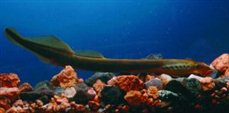River Acquanegra
River Acquanegra is the only river leaving Lake Monate, at 266 m above sea level. After a distance of 11.6 km with an average slope of 0.6%, and having received water from a small number of minor rivers, it flows into Lake Maggiore at Cascina Levorascio, in the municipality of Ispra, at 193 m above sea level.
The river runs across the higher part of the alluvial plain, through a fairly anthropized area but that is still prevalently covered by open deciduous woodland. The wide, shallow river valley has a bed consisting principally of sand and mud, and its meandering course is determined by the very slight gradient and the slow-running current, encouraging the formation of extensive sediments of fine and coarser organic detritus.
The annual statistics on the river's monthly flow rates show an annual average of around 0.73 cubic metres per second, with variations determined principally by rainfall variations. There is a moderate peak flow in April-May, and two periods of slack flow, in August and December.
The fish population of this river is not very extensive, with a predominance of hardy species such as chub and the Italian gudgeon. The brown trout is present, with adult specimens surviving from successive repopulation programmes performed during river management operations. Another species with an appreciable population is the Po brook lamprey, a protected species whose population is decreasing in its distribution area.
The river runs across the higher part of the alluvial plain, through a fairly anthropized area but that is still prevalently covered by open deciduous woodland. The wide, shallow river valley has a bed consisting principally of sand and mud, and its meandering course is determined by the very slight gradient and the slow-running current, encouraging the formation of extensive sediments of fine and coarser organic detritus.
The annual statistics on the river's monthly flow rates show an annual average of around 0.73 cubic metres per second, with variations determined principally by rainfall variations. There is a moderate peak flow in April-May, and two periods of slack flow, in August and December.
The fish population of this river is not very extensive, with a predominance of hardy species such as chub and the Italian gudgeon. The brown trout is present, with adult specimens surviving from successive repopulation programmes performed during river management operations. Another species with an appreciable population is the Po brook lamprey, a protected species whose population is decreasing in its distribution area.





